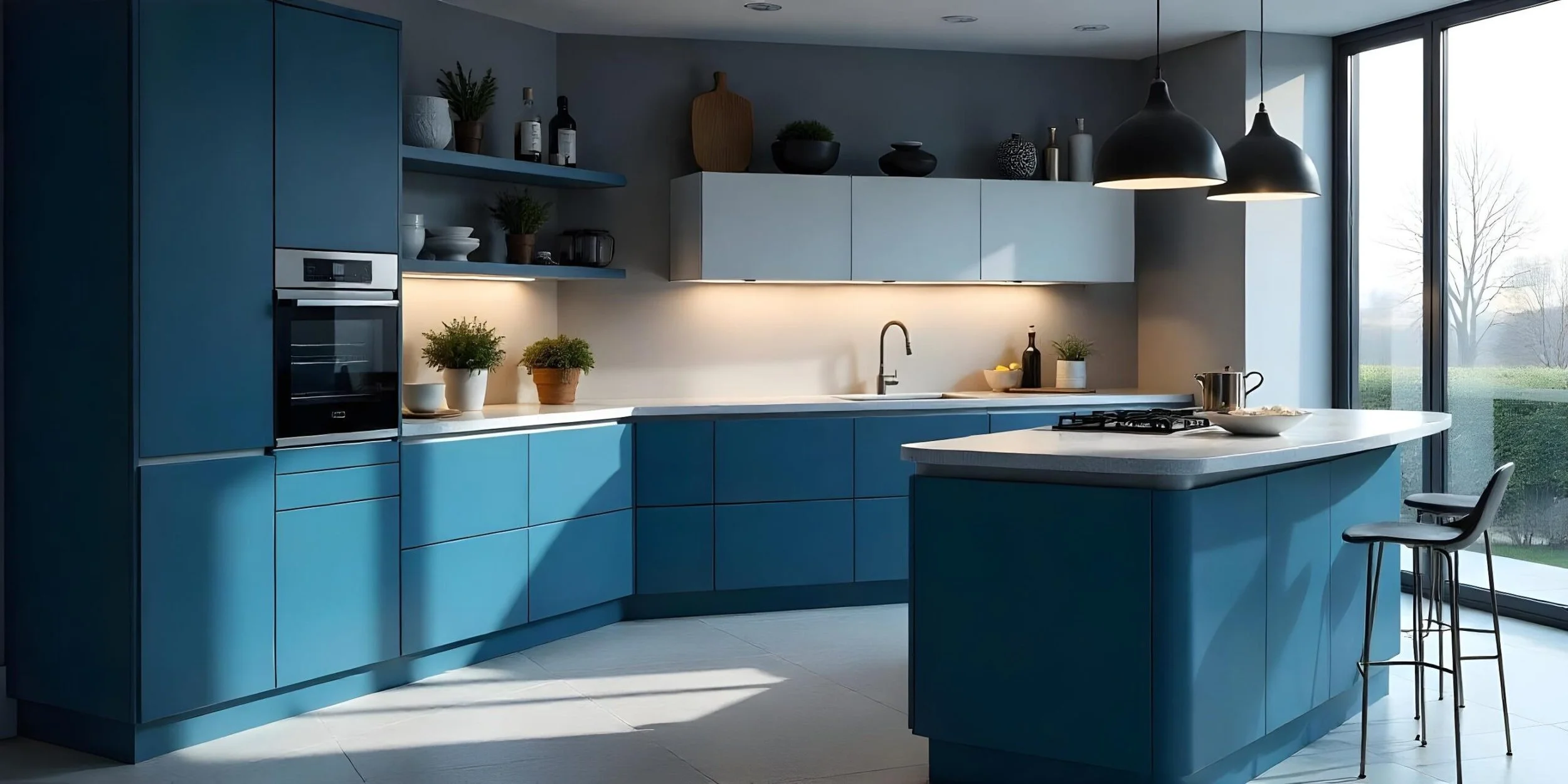How to Choose Kitchen Cabinet Color? Practical Tips
Choosing your kitchen cabinet color isn’t just picking paint. It sets the mood for every coffee break, late-night snack, and Sunday brunch.
Pick well, and the space feels unified. Miss the mark, and something always feels a little off.
Thankfully, it’s easier than it seems — you just need the right tips.
How to choose kitchen cabinet color?
Pick colors that match your kitchen's size, lighting, and mood. Test samples and choose shades that feel good and work with your space.
Key Takeaways
Choose cabinet colors based on your kitchen’s vibe, size, and lighting.
Light colors open up small spaces, bold shades add depth to larger ones.
Test samples in real lighting before deciding.
Balance trends with timeless options for long-term appeal.
Coordinate with appliances and hardware for a cohesive look.
Understand the Overall Style and Mood of Your Kitchen
Before picking colors, consider your kitchen’s vibe. Are the countertops bold? Is the floor light or dark? Work with these, not against them.
Decide how you want the space to feel. Cozy and inviting? Warm tones help. Clean and crisp? Cool shades lead the way.
Cabinets shouldn’t dominate unless that’s your style. If everything else is neutral, go bold. If not, keep them subtle.
Trendy colors can tempt, but timeless choices last. Will deep green still appeal in two years? Choose colors that reflect your taste, not just trends.
Consider the Size and Lighting of the Space
Small kitchens benefit from light colors. Soft shades like white, beige, or pale gray make walls feel farther apart. Darker colors may make the space feel cramped.
Larger kitchens can embrace bolder hues. Navy or forest green add depth and prevent big spaces from feeling empty.
Lighting is key. Natural light makes colors vibrant, while dim light can make dark shades feel heavy.
Always test samples first. See how they look in the morning, afternoon, and evening before making a decision.
Match or Contrast with Walls and Floors
Matching or contrasting cabinets with walls and floors depends on the look you want. Matching with soft whites or gentle grays creates a seamless, open feel.
For more personality, contrast makes a statement. Dark cabinets against light walls, or vice versa, add depth and interest.
Balance matters most. Go too bold, and it may feel chaotic. Stay too safe, and the design may lack impact. Always test colors first to see how they work in your space.
Factor in Trends vs Timeless Choices
Trendy colors are exciting, but may not stand the test of time. Moody blues and deep greens are popular now, but trends fade.
Timeless shades like crisp whites, soft grays, and warm neutrals never go out of style. They work with any decor and stay relevant.
For the best of both worlds, use bold colors as accents. Keep your main cabinets neutral, so updating the look later is simple and affordable.
Coordinate with Appliance and Hardware Finishes
Appliances set the kitchen’s style. Stainless steel feels modern, matte black adds edge, and white offers a timeless look. Cabinet colors should complement, not clash.
Next, consider hardware. Handles and pulls add character. Gold offers warmth, black adds contrast, and chrome keeps things clean and sharp.
Pull everything together. Your cabinet color should connect these elements naturally, creating a balanced and cohesive space.
Think About Maintenance and Practicality
Light or dark cabinets affect maintenance. White shows smudges easily, while dark colors hide dirt but attract dust. Consider which option suits your lifestyle.
Glossy or matte finishes also matter. Glossy surfaces are easy to clean but show fingerprints. Matte hides marks but may stain.
Think practically. Busy homes may benefit from darker, matte cabinets, while lighter, glossy ones work for lower-traffic spaces.
Test Samples Before Deciding
Colors often look different in person than they do on screens. Physical samples help you see how they react to your kitchen’s lighting throughout the day.
Check samples under morning sun, overhead lighting, and evening shadows. Colors shift more than you might expect.
If one sample feels right every time you see it, trust your instincts. Cabinets are long-term, so choose what feels best in your space.
Frequently Asked Questions
1. What color cabinets make a kitchen look bigger?
Light colors like white, soft gray, or pale beige open up the space. They reflect light and make your kitchen feel airy, not cramped.
2. Should cabinets match walls?
Not always. Matching keeps it calm, contrasting adds pop. Go with what fits your vibe.
3. Is it safe to choose trendy colors?
Trendy looks can hit or miss. If resale is on your radar, stick with timeless shades. Want to flex? Try bold tones on just the island or lower cabinets.
4. Can I mix cabinet colors?
Absolutely. Two-tone cabinets are a smart move if balanced right. Think contrast, not chaos. Looking for inspiration? Check out design ideas for mixing kitchen cabinet styles—like pairing light uppers with darker lowers or mixing painted finishes with natural wood for a modern yet timeless effect.
Conclusion
Choosing your cabinet color shouldn’t feel like homework. Forget trends for a second. Focus on what clicks with you. This is your space, and it should feel right every time you walk in.
Test colors in real light. Day, night, morning coffee glow. Samples show you the truth before you commit.
Once you’ve found your color, roll with it. Bold or neutral, it’s all about what makes you smile when you open the fridge at midnight. Trust your gut. Your kitchen, your rules.


